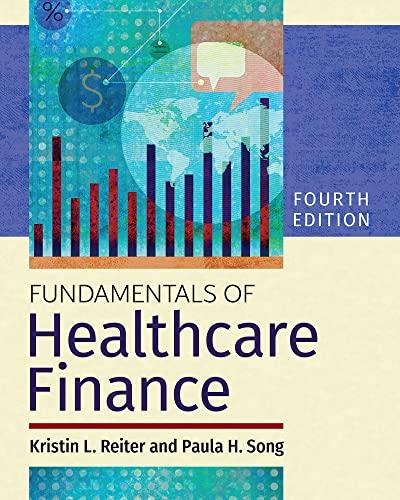Answered step by step
Verified Expert Solution
Question
1 Approved Answer
Option 1 : The hospital is considering two mutually exclusive projects listed in no specific order. The first option is to not build the radiology
Option : The hospital is considering two mutually exclusive projects listed in no specific order. The first option is to not build the radiology center but make an investment in updating its radiology center by remodeling the area and acquiring a few new imaging machines. The total project will cost $ million dollars and based on technological advances, a useful life years with no salvage value using straightline depreciation. For simplicity, assume MACRS does not apply and straightline is used. Also, recall that depreciation is not a cashflow item but a noncash flow expense that includes a tax deduction tax benefit
The combined federal, state, and local tax rate on its income is This rate is not expected to change during the investment period. The projected pretax operating cash inflows is expected to be $ for each of the ten years. Since this is an averagerisk project, the WACC of will be used.
Option : The second option is to build a stateoftheart radiology center that will draw patients needing diagnostic testing and evaluation throughout the country. This option will require a significant investment of $ This investment is considered higher risk and has a hurdle rate of The combined tax rate is The useful life is years with no salvage assume MACRS does not apply The projected pretax operating cash inflows is expected to be $ for each of the fifteen years.
Calculate the net present value NPVpg for each option under the assumptions that cash inflows occur at yearend. Round your answer to nearest whole dollars. Show your calculations. Use a table format. points
Note: Since this is a discounted cash flow DCF model you will need to use one of the following methods to find the NPV use the PVFV annuity table a financial calculator or an Excel builtin function using formula NPV rate values
Based upon the NPV method, for each option as calculated in Req. which option would be a better investment based on its NPV Explain your answer and show your calculations.
Step by Step Solution
There are 3 Steps involved in it
Step: 1

Get Instant Access to Expert-Tailored Solutions
See step-by-step solutions with expert insights and AI powered tools for academic success
Step: 2

Step: 3

Ace Your Homework with AI
Get the answers you need in no time with our AI-driven, step-by-step assistance
Get Started


